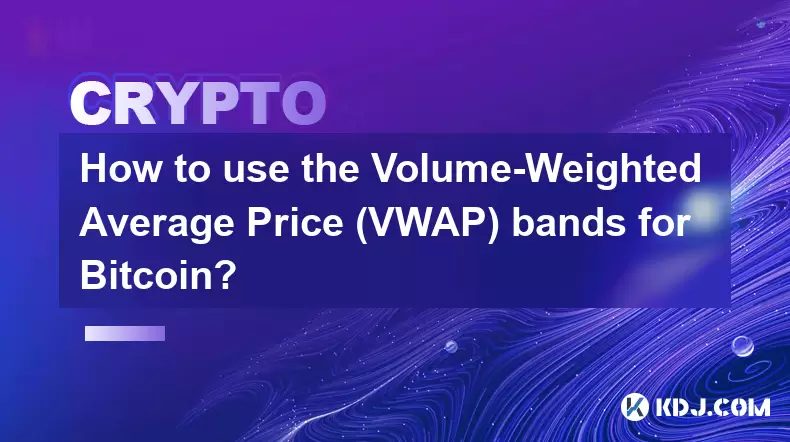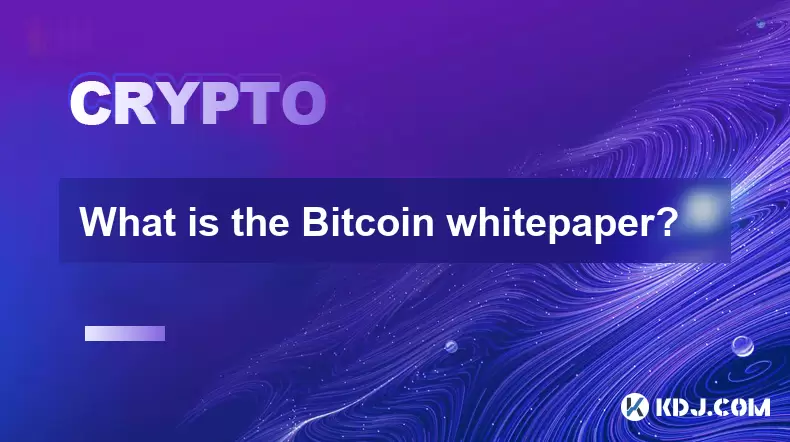-
 Bitcoin
Bitcoin $108,192.4840
-0.79% -
 Ethereum
Ethereum $2,520.0996
-1.16% -
 Tether USDt
Tether USDt $1.0002
-0.01% -
 XRP
XRP $2.2216
-0.44% -
 BNB
BNB $655.3498
-0.46% -
 Solana
Solana $148.0291
-1.58% -
 USDC
USDC $0.9999
0.00% -
 TRON
TRON $0.2831
-1.37% -
 Dogecoin
Dogecoin $0.1642
-1.68% -
 Cardano
Cardano $0.5748
-1.24% -
 Hyperliquid
Hyperliquid $39.4087
1.28% -
 Sui
Sui $2.9157
-0.36% -
 Bitcoin Cash
Bitcoin Cash $483.5621
0.38% -
 Chainlink
Chainlink $13.2143
-1.13% -
 UNUS SED LEO
UNUS SED LEO $9.0623
0.20% -
 Avalanche
Avalanche $17.8302
-1.40% -
 Stellar
Stellar $0.2374
-1.09% -
 Toncoin
Toncoin $2.7496
-2.20% -
 Shiba Inu
Shiba Inu $0.0...01147
-0.83% -
 Hedera
Hedera $0.1557
0.09% -
 Litecoin
Litecoin $86.3775
-1.75% -
 Monero
Monero $312.5454
-2.83% -
 Polkadot
Polkadot $3.3663
-2.25% -
 Dai
Dai $1.0000
0.01% -
 Ethena USDe
Ethena USDe $1.0001
0.00% -
 Bitget Token
Bitget Token $4.4127
-1.15% -
 Uniswap
Uniswap $6.9598
-5.53% -
 Pepe
Pepe $0.0...09815
0.25% -
 Aave
Aave $270.5779
0.33% -
 Pi
Pi $0.4678
-3.14%
What should I do if the Bitcoin transaction fails? What are the common reasons?
Bitcoin transactions can fail due to network congestion, low fees, or incorrect details; to resolve, check status, adjust fees, and verify details before sending.
Apr 29, 2025 at 09:35 am

If you're facing a failed Bitcoin transaction, understanding the common reasons and knowing the steps to resolve the issue can be crucial. Bitcoin transactions can fail for several reasons, ranging from network congestion to incorrect fee settings. This article will guide you through the common reasons for transaction failures and provide detailed steps on what you can do to address the problem.
Common Reasons for Bitcoin Transaction Failures
Network Congestion: One of the most frequent reasons for transaction failures is network congestion. When the Bitcoin network is overwhelmed with a high volume of transactions, it can lead to delays or failures. During peak times, the network might struggle to process all transactions quickly, resulting in some transactions being stuck or rejected.
Insufficient Transaction Fees: Another common reason is insufficient transaction fees. Bitcoin transactions require a fee to incentivize miners to include them in the blockchain. If the fee is too low, miners may prioritize other transactions with higher fees, leading to delays or failures.
Incorrect Transaction Details: Incorrect transaction details, such as a wrong address or an invalid amount, can cause transactions to fail. Double-checking the recipient's address and the amount before initiating a transaction is essential to avoid such errors.
Double-Spending Attempts: Double-spending attempts occur when someone tries to spend the same Bitcoin more than once. This can lead to transaction failures as the network detects and rejects such attempts to maintain the integrity of the blockchain.
Wallet or Software Issues: Sometimes, wallet or software issues can lead to transaction failures. Bugs or glitches in the software you're using to manage your Bitcoin can prevent transactions from being processed correctly.
Steps to Resolve a Failed Bitcoin Transaction
If your Bitcoin transaction has failed, here are detailed steps you can take to resolve the issue:
Check Transaction Status
- Use a Blockchain Explorer: First, you should check the status of your transaction using a blockchain explorer like Blockchain.com or Blockchair. Enter your transaction ID (TXID) to see if it's been confirmed, stuck, or rejected.
- Check for Confirmations: If the transaction has no confirmations, it might be stuck in the mempool. If it has been rejected, you'll need to take further action.
Adjust Transaction Fees
- Increase the Fee: If your transaction is stuck due to low fees, you can attempt to increase the fee using a feature called Replace-By-Fee (RBF) if your wallet supports it. This allows you to rebroadcast the transaction with a higher fee, encouraging miners to prioritize it.
- Open your wallet and find the transaction in question.
- Look for an option to increase the fee or use RBF.
- Set a higher fee and confirm the new transaction.
- Use Child Pays for Parent (CPFP): If RBF is not an option, you can use Child Pays for Parent (CPFP). This involves creating a new transaction that spends the outputs of the stuck transaction with a higher fee.
- Create a new transaction that spends the unconfirmed outputs of the stuck transaction.
- Set a high fee for the new transaction to encourage miners to include both transactions.
Double-Check Transaction Details
- Verify Address and Amount: Ensure that the recipient's address and the amount are correct. If you've entered incorrect details, you may need to cancel the transaction and start over.
- Review the transaction details in your wallet.
- If there are errors, cancel the transaction if possible and re-enter the correct details.
Contact Wallet Support
- Reach Out to Wallet Support: If you're unable to resolve the issue on your own, contact the support team of your wallet provider. They can offer guidance or take action to help resolve the transaction.
- Navigate to the support section of your wallet's website or app.
- Submit a support ticket with details of your transaction and the issue you're facing.
Wait for Network Conditions to Improve
- Monitor Network Congestion: Sometimes, the best course of action is to wait for network conditions to improve. If the network is congested, waiting a few hours or days might allow your transaction to be processed.
- Use tools like mempool.space to monitor the current state of the Bitcoin network.
- If congestion decreases, your transaction may be processed without further action.
Preventing Future Transaction Failures
To minimize the risk of future transaction failures, consider the following tips:
Set Appropriate Fees
- Use Dynamic Fee Estimation: Many wallets offer dynamic fee estimation tools that suggest an appropriate fee based on current network conditions. Using these tools can help ensure your transactions are processed promptly.
- Enable dynamic fee estimation in your wallet settings.
- Review the suggested fee before confirming your transaction.
Double-Check Transaction Details
- Verify Before Sending: Always double-check the recipient's address and the amount before sending Bitcoin. A single mistake can lead to a failed transaction or loss of funds.
- Copy and paste the recipient's address to avoid typos.
- Confirm the amount multiple times before sending.
Keep Your Wallet Updated
- Regular Updates: Ensure your wallet software is regularly updated to avoid bugs and glitches that could cause transaction failures.
- Check for updates in your wallet's settings or app store.
- Install the latest version to benefit from bug fixes and improvements.
Use Reliable Wallets
- Choose Trusted Wallets: Opt for reputable and reliable wallets that have a track record of handling transactions smoothly. Research and read reviews before selecting a wallet.
- Look for wallets recommended by the Bitcoin community.
- Consider wallets with strong security features and user-friendly interfaces.
Frequently Asked Questions
Q: Can I cancel a Bitcoin transaction after it has been broadcast to the network?
A: If the transaction has not been confirmed, you may be able to cancel it using RBF or CPFP methods, as described earlier. However, once a transaction is confirmed on the blockchain, it cannot be canceled or reversed.
Q: How long should I wait before taking action on a stuck transaction?
A: It's generally recommended to wait at least 24 hours before taking action on a stuck transaction. This allows time for network conditions to improve and for the transaction to be processed naturally.
Q: Are there any risks associated with increasing transaction fees using RBF or CPFP?
A: While increasing fees can help resolve stuck transactions, there are risks involved. If you set the fee too high, you might end up paying more than necessary. Additionally, if the new transaction fails, you could lose the additional fees paid.
Q: Can I recover funds from a failed transaction?
A: If a transaction fails due to incorrect details or other issues, you may be able to recover the funds by canceling the transaction before it's confirmed. However, if the transaction is confirmed and the funds are sent to an incorrect address, recovery is typically not possible without the cooperation of the recipient.
Disclaimer:info@kdj.com
The information provided is not trading advice. kdj.com does not assume any responsibility for any investments made based on the information provided in this article. Cryptocurrencies are highly volatile and it is highly recommended that you invest with caution after thorough research!
If you believe that the content used on this website infringes your copyright, please contact us immediately (info@kdj.com) and we will delete it promptly.
- Bitcoin's Pattern Break: Are HODLers the Key to the Next Surge?
- 2025-07-04 18:50:12
- Bitcoin Price, Trump's Bill, and the $150K Dream: A NYC Take
- 2025-07-04 19:50:12
- Ethereum, LILPEPE, and the July Bounce: Will Pepe Steal ETH's Thunder?
- 2025-07-04 19:10:12
- Binance Institutional Loans: Unlocking 4x Leverage and Zero Interest for Whales
- 2025-07-04 19:15:12
- Bitcoin Bull Run: Analysts Eye Peak in Late 2025?
- 2025-07-04 19:20:13
- Pepe Indicators, Bullish Forecast: Can the Meme Coin Rally?
- 2025-07-04 19:25:12
Related knowledge

What is the Woodies CCI indicator and can it be used for Bitcoin?
Jul 04,2025 at 05:14pm
Understanding the Woodies CCI IndicatorThe Woodies CCI indicator is a variation of the traditional Commodity Channel Index (CCI), which was originally developed by Donald Lambert. The standard CCI measures the current price level relative to an average price over a given period, typically 14. However, the Woodies version modifies this calculation to mak...

How to use the Volume-Weighted Average Price (VWAP) bands for Bitcoin?
Jul 04,2025 at 04:28pm
Understanding the Basics of VWAP BandsThe Volume-Weighted Average Price (VWAP) is a key metric used in trading to determine the average price at which an asset, such as Bitcoin, has traded throughout the day. It takes into account both volume and price, making it more reliable than a simple moving average. VWAP bands are essentially standard deviation c...

What is the VWAP indicator and how to use it for Bitcoin?
Jul 04,2025 at 05:28pm
Understanding the VWAP IndicatorThe VWAP (Volume Weighted Average Price) is a technical analysis tool used to determine the average price a cryptocurrency has traded at throughout the day, based on both volume and price. It provides traders with insights into the true average value of an asset by giving more weight to periods where trading volume was hi...

How to read Bitcoin candlestick charts for beginners?
Jul 04,2025 at 11:22am
Understanding the Basics of Candlestick ChartsCandlestick charts are a popular tool used in cryptocurrency trading to analyze price movements. Each candlestick represents a specific time period, such as one minute, five minutes, or even one day. For beginners, understanding how to interpret these charts is crucial for making informed trading decisions. ...

What is the role of Satoshi Nakamoto in Bitcoin?
Jul 04,2025 at 03:14am
Who is Satoshi Nakamoto?Satoshi Nakamoto is the pseudonymous individual or group responsible for creating Bitcoin, the world's first decentralized digital currency. Despite extensive research and speculation, the true identity of Satoshi Nakamoto remains unknown. The name was used in communications related to the development and release of the Bitcoin w...

What is the Bitcoin whitepaper?
Jul 04,2025 at 01:42am
What is the Bitcoin Whitepaper?The Bitcoin whitepaper is a foundational document published in 2008 by an individual or group using the pseudonym Satoshi Nakamoto. Titled 'Bitcoin: A Peer-to-Peer Electronic Cash System', it outlines the theoretical framework and technical specifications for creating a decentralized digital currency. This paper introduced...

What is the Woodies CCI indicator and can it be used for Bitcoin?
Jul 04,2025 at 05:14pm
Understanding the Woodies CCI IndicatorThe Woodies CCI indicator is a variation of the traditional Commodity Channel Index (CCI), which was originally developed by Donald Lambert. The standard CCI measures the current price level relative to an average price over a given period, typically 14. However, the Woodies version modifies this calculation to mak...

How to use the Volume-Weighted Average Price (VWAP) bands for Bitcoin?
Jul 04,2025 at 04:28pm
Understanding the Basics of VWAP BandsThe Volume-Weighted Average Price (VWAP) is a key metric used in trading to determine the average price at which an asset, such as Bitcoin, has traded throughout the day. It takes into account both volume and price, making it more reliable than a simple moving average. VWAP bands are essentially standard deviation c...

What is the VWAP indicator and how to use it for Bitcoin?
Jul 04,2025 at 05:28pm
Understanding the VWAP IndicatorThe VWAP (Volume Weighted Average Price) is a technical analysis tool used to determine the average price a cryptocurrency has traded at throughout the day, based on both volume and price. It provides traders with insights into the true average value of an asset by giving more weight to periods where trading volume was hi...

How to read Bitcoin candlestick charts for beginners?
Jul 04,2025 at 11:22am
Understanding the Basics of Candlestick ChartsCandlestick charts are a popular tool used in cryptocurrency trading to analyze price movements. Each candlestick represents a specific time period, such as one minute, five minutes, or even one day. For beginners, understanding how to interpret these charts is crucial for making informed trading decisions. ...

What is the role of Satoshi Nakamoto in Bitcoin?
Jul 04,2025 at 03:14am
Who is Satoshi Nakamoto?Satoshi Nakamoto is the pseudonymous individual or group responsible for creating Bitcoin, the world's first decentralized digital currency. Despite extensive research and speculation, the true identity of Satoshi Nakamoto remains unknown. The name was used in communications related to the development and release of the Bitcoin w...

What is the Bitcoin whitepaper?
Jul 04,2025 at 01:42am
What is the Bitcoin Whitepaper?The Bitcoin whitepaper is a foundational document published in 2008 by an individual or group using the pseudonym Satoshi Nakamoto. Titled 'Bitcoin: A Peer-to-Peer Electronic Cash System', it outlines the theoretical framework and technical specifications for creating a decentralized digital currency. This paper introduced...
See all articles

























































































